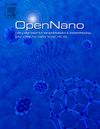Bioprinting 3D lattice-structured lumens using polyethylene glycol diacrylate (PEGDA) combined with self-assembling peptide nanofibers as hybrid bioinks for anchorage dependent cells
Q2 Pharmacology, Toxicology and Pharmaceutics
引用次数: 0
Abstract
There is a pressing need for new cell-laden, printable bioinks to mimic stiffer tissues such as cartilage, fibrotic tissue and bone. PEGDA monomers are bioinks that crosslink with light to form a viscoelastic solid, however, they lack cell adhesion properties. Here, we utilized a hybrid bioink by combining self-assembled peptide nanofibers with PEGDA for 3D printing lumens. Adult human dermal fibroblast (aHDF) cells were first seeded in peptide-laden in 2D and 3D layers and cell behavior were studied. The cell's morphology remained spheres when they were infused in the 3D hydrogel and highly aligned with 2D overlay hydrogels. HDF cells did not adhere to unmodified PEGDA lumens, however, they successfully attached and proliferated on PEGDA/peptide lumens. Moreover, HDF cells seeded on the hybrid PEGDA/peptide lumens displayed a distinct spread F-actin morphology. The results showcase the potential of peptide hydrogels in facilitating interaction of anchorage dependent cells with PEGDA structures.
使用聚乙二醇二丙烯酸酯(PEGDA)结合自组装肽纳米纤维作为锚定依赖细胞的杂交生物墨水,生物打印3D晶格结构的管腔
目前迫切需要一种新型的、装载细胞的、可打印的生物墨水来模拟更硬的组织,如软骨、纤维化组织和骨骼。PEGDA单体是与光交联形成粘弹性固体的生物墨水,然而,它们缺乏细胞粘附特性。在这里,我们将自组装肽纳米纤维与PEGDA结合在一起,利用混合生物墨水进行3D打印流明。将成人真皮成纤维细胞(aHDF)首先在二维和三维层中植入,并研究细胞行为。当细胞注入3D水凝胶并与2D覆盖水凝胶高度对齐时,细胞形态保持球形。HDF细胞不粘附在未修饰的PEGDA管腔上,但它们成功地附着在PEGDA/肽管腔上并增殖。此外,在杂交PEGDA/肽管腔上接种的HDF细胞表现出明显的扩散f -肌动蛋白形态。结果表明肽水凝胶在促进锚定依赖细胞与PEGDA结构的相互作用方面具有潜力。
本文章由计算机程序翻译,如有差异,请以英文原文为准。
求助全文
约1分钟内获得全文
求助全文
来源期刊

OpenNano
Medicine-Pharmacology (medical)
CiteScore
4.10
自引率
0.00%
发文量
63
审稿时长
50 days
期刊介绍:
OpenNano is an internationally peer-reviewed and open access journal publishing high-quality review articles and original research papers on the burgeoning area of nanopharmaceutics and nanosized delivery systems for drugs, genes, and imaging agents. The Journal publishes basic, translational and clinical research as well as methodological papers and aims to bring together chemists, biochemists, cell biologists, material scientists, pharmaceutical scientists, pharmacologists, clinicians and all others working in this exciting and challenging area.
 求助内容:
求助内容: 应助结果提醒方式:
应助结果提醒方式:


